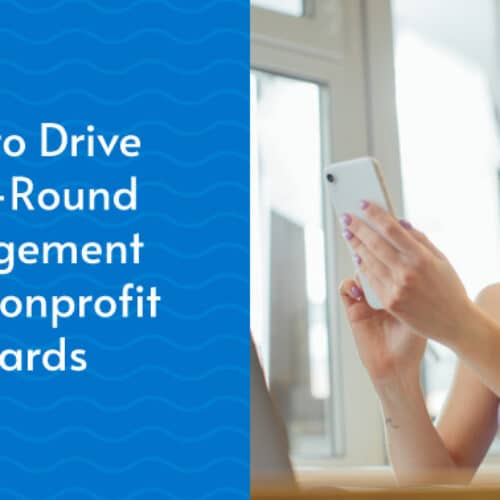
In fundraising, far too often time and attention is only spent on the act of fundraising – all the activities that will raise revenue for important missions. In the frenzy to reach fundraising goals year over year, it can feel impossible to spend time measuring progress and identifying areas for attention.
Yet, assessing your fundraising is important not just to track current progress, but especially to give us insights into what might help or hinder our future fundraising growth. If we aren’t pausing to evaluate, we might get stuck doing the same things over and over again with the same and stagnant results.
If you are asked about your fundraising progress, would you only talk about how much money you’ve raised against your fiscal year goal? How well do you really know your organization’s fundraising health and all the factors that influence whether or not you are actually raising sustainable and scalable money? A fundraising assessment is a comprehensive audit of your current and past fundraising efforts with the goal of identifying your organizations strengths and weaknesses. Conducting an assessment is key to understanding how to best grow fundraising. There are a couple of ways to build fundraising assessments as a regular part of your development strategy.
Conducting a Fundraising Assessment Yourself
First, you need to know what you are measuring. The great management theory thought leader, Peter Drucker, once said, “What gets measured, gets improved.” Fundraising success isn’t solely defined by the amount of money you raise. There is no denying that it’s an important metric because it directly affects the financial health of your organization. But, fundraising encompasses many different moving parts and levels of involvement by different people. If the only measure of success is the dollars we bring in, then we are missing an important chance to grow and evolve especially as we face increasing needs for our services and growing fundraising goals.
Fundraising metrics give you the information you need to make data-driven decisions about where you can build off your successes, eliminate activities that are no longer working, and identify opportunities for improvement. You don’t need a whole system of complicated (and time-consuming to calculate) benchmarks for the sake of having them. If you have a small Development team and/or your database isn’t especially capable of tracking key indicators, you’ll end up wasting precious time that you should be using to fundraise.There are three key areas that are critical to effective fundraising: donors’ behavior and giving patterns, return of your fundraising costs, and the level of engagement from your organization’s leadership. Depending on your internal capacity, you may want to start by choosing one or two metrics from each category to focus on. Compare a few fiscal years to get a bigger picture of trends in your fundraising performance, so you can determine where you need to build on your wins and make course corrections:
Donor Behavior:
- General Inventory of Your Donors—How many total donors do you have? How many of those donors are new, LYBUNTS (gave last year but not yet this year), and SYBUNTS (have given in the past but not last year or this year)?
- Donor Retention—How many of your donors are continuing to give every year? Fundraising success is not just about the amount of money you raise. It’s also about the number of donors who are consistently renewing their gifts. In fact, many would argue that donor retention is the most important metric to guide your fundraising strategy. Do you know how many of your donors you’re retaining year over year? If your donor retention rate is less than 50 percent, you should be focused on keeping every single donor. If you don’t know what your specific retention rate is, now is the perfect time to calculate it.
- Snapshot of Donor Giving Levels— Is there a trend in the giving levels of your donors – increasing, decreasing, or staying the same? Tracking donors by various gift ranges ($1-$249, $250-$499, $500-$999, and so on) allows you to see where to focus attention on increasing donation amounts, maybe through increased donor communication or staff/Board outreach. You can also take a closer look at donors who have the potential to become future large-gift donors.
- Breakdown by Revenue Source—How are your supporters contributing to your cause? Through direct mail, online donations, monthly giving, events? Which of your various fundraising activities have performed well over the last few years? Which have performed poorly?
- Donor Acquisition—You are probably using a multi-channel fundraising approach which includes social media and more, “traditional” fundraising methods (direct mail, online giving, etc.). Are any of the new people you’re reaching signing up for your communications or promoting your cause on social media? How many of them actually become donors? This helps you understand how potential donors are finding you and what may or may not influence their decision to convert their interest into a donation.
Financials:
- Cost to Raise a Dollar (CTRD)—How much money are you spending on your fundraising activities versus how much you are actually raising? If you have a small staff and limited budget, focus on the activities that have the highest ROI. For example, events typically have a higher CTRD than major gifts fundraising, and fundraising from existing donors has a lower CTRD than from non-donors.
- Average Gift—What trend is your organization’s average gift size following? Hopefully it is increasing to show deeper investment by your donors. If your average gift size isn’t increasing, how can you build better relationships and communicate more effectively across your various channels?
Board:
- Percentage of Board Giving—What percentage of your Board members are making a gift of their own? It should be 100%. If that’s not the case, it’s time to figure out why and how to get full participation from your board.
- Amount of Board Giving—On average, donations coming from your Board members (not including soft credit for gifts they facilitate) tend to make up less than 10% of an organization’s overall fundraising total. How does your Board giving compare?
- Percentage of Board Involved in Fundraising—How many members of your Board are actively participating in your fundraising efforts? It’s important for your Board to be involved in some aspect of fundraising. Remember, Board fundraising goes beyond just making the ask – there are plenty of roles for each member to play!
Assessing your nonprofit’s fundraising metrics gives you insights into the vital signs of your organization’s financial health. They provide you with different ways to keep an eye on all the factors that determine whether or not the plans you’ve put in place will lead to a successful fundraising year.
It’s worth time every quarter to look at your metrics to understand gaps you need to pay attention to now so you can finish the fiscal year strong and build a solid foundation for future fundraising growth.
Hiring a Consultant for Your Fundraising Assessment
Sometimes, though, you might benefit more from an external assessment bringing in a consultant to do deep dives into your data, conduct their own internal and external discovery to learn about your fundraising from internal and external perspectives, and give you data-informed recommendations. Working with an outside consultant to conduct a fundraising assessment is particularly helpful when you feel stuck in your fundraising and can’t figure out why fundraising is stagnant.
Or maybe you have plans to grow fundraising results to plan for a campaign in the future or simply to expand your mission and programs and you’re not sure what makes sense in terms of resources needed and next steps. Having an outside and objective perspective to analyze your data, assess your internal and external fundraising systems and mindsets, and listen to staff, board, and donors about their fundraising experiences can offer essential insights.
The added advantage of hiring a consultant to conduct an assessment is that they bring with them broad experience and perspectives so can share insights learned from assessing many other types of nonprofits. Consulting firms will also have tools and platforms to conduct analytics on your donor file, use AI and predictive modeling to inform segmentation to prioritize your donor outreach and staff time. Unlike the internal assessment that you might do, consultants can recommend what you actually “do” with your metrics so that you aren’t left with just trends and percentages but have ideas for how to apply them to different fundraising strategies moving forward.
Perhaps most importantly, they are objective. Since they’re not living and breathing your fundraising day in and day out, they are not emotionally tied to your fundraising activities and can give you impartial recommendations based on proven practices. Consider bringing on a consultant to conduct an assessment as a jumpstart to forging a new way forward for your fundraising growth.
With a solid understanding of the vital signs of your organization’s fundraising health, you can then make data-informed plans that position you to raise more money and best leverage staff and volunteer time and talent.
Learn how Windmill Hill Consulting has used assessments to help clients position their fundraising to scale. Ready to take a deep dive into your fundraising strategy and raise more money? Connect with our team here.




